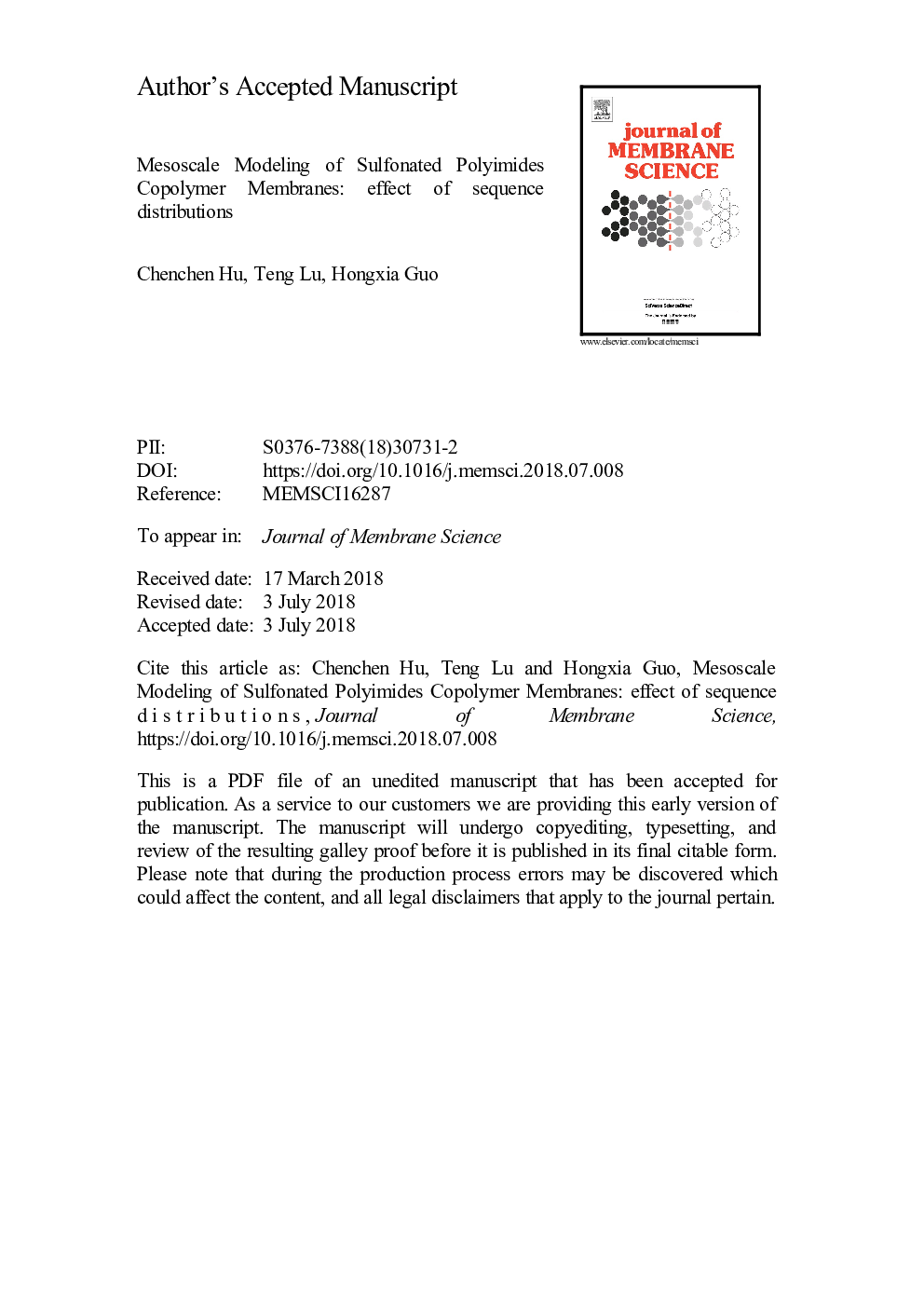| Article ID | Journal | Published Year | Pages | File Type |
|---|---|---|---|---|
| 7019586 | Journal of Membrane Science | 2018 | 40 Pages |
Abstract
We adopt dissipative particle dynamics simulation technique and systematically study the effect of sequence distributions of hydrophobic and hydrophilic segments in individual sulfonated polyimide (SPI) copolymer on the micro-phase separated structure and the performance of proton exchange membranes (PEMs) under various water contents. The phase morphology as well as the shape and size of water channels is affected by sequence distributions. Compared to the di-block copolymer and the alt-copolymer, water channels in the multi-block copolymer are more homogenous. Additionally, the copolymer sequence distributions affect the water transport which is closely related to the proton conductivity, the dimensional stability and the mechanical properties of PEMs via tuning the phase structure. Generally, the more homogenous water channels the faster water transport. As for the dimensional stability, unlike the other two copolymers the unique shrinkage behavior of multi-block copolymer can resist the membrane swelling induced by water uptake. Moreover, the system with short block has relatively large Young's modulus and the influence of sequence distributions on Young's modulus weakens with the addition of water. Consequently, the multi-block SPI copolymer possesses fast water transport, low dimension-swelling and relatively high Young's modulus, which will make it a potentially huge application in PEM.
Keywords
Related Topics
Physical Sciences and Engineering
Chemical Engineering
Filtration and Separation
Authors
Chenchen Hu, Teng Lu, Hongxia Guo,
